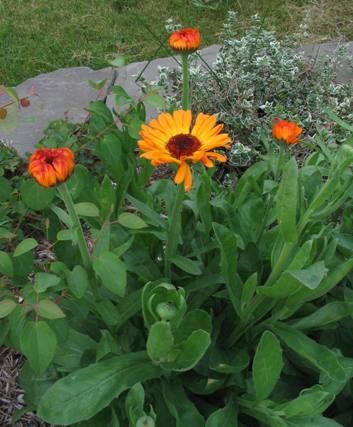
Parts Used: flowers and oil
Constituents: carotenoids, resin, essential oil, flavonoids, sterol, bitter principle, saponins, mucilage
Calendula is a stunningly beautiful flower, the deep orange and yellow petals form a colorful contrast with the greenery in the herb garden. It is little wonder that Calendula, called "Marygold", Marigold or "sunbride" in the herbals of the middle ages was ascribed such magical powers and healing virtues, the flower's oil heals the skin so well. The German Commission E has verified the effectiveness of calendula in healing wounds and reducing inflammation.
Calendula is particularly good treatment for cuts, scrapes, bruises, insect bites and minor wounds. Calendula is also antifungal and so can help to cure thrush (Candida albicans). Mabey, pp46 The antibacterial and anti-inflammatory properties of calendula make it a good face wash for dry, irritated skin and acne. Fresh calendula petals can also be infused in boiling water and used to treat minor infections, conjunctivitis, and mouth sores. Calendula tinctures are also a concentrated and convenient way to treat sore or infected gums.
No comments:
Post a Comment